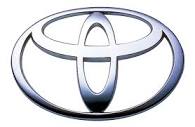Tundra 2WD V8-5.7L (3UR-FE) (2007)
/Page-444001.png)
Refrigerant: Service and Repair
REPLACEMENT
1. DISCHARGE REFRIGERANT FROM REFRIGERATION SYSTEM
a. Start up the engine.
b. Turn the A/C switch ON.
c. Operate the cooler compressor with an engine speed of approximately 1000 rpm for 5 to 6 minutes to circulate the refrigerant and collect the
compressor oil remaining in each component into the cooler compressor.
d. Stop the engine.
e. Using SST, discharge the refrigerant gas.
SST 07110-58060 (07117-58060, 07117-58070, 07117-58080, 07117-58090, 07117-78050, 07117-88060, 07117-88070, 07117-88080)
2. CHARGE REFRIGERANT
a. Perform vacuum purging using a vacuum pump.
b. Charge refrigerant HFC-134a (R134a).
Standard: 600 ± 30 g (21.2 ± 1.1 oz.)
SST 07110-58060 (07117-58060, 07117-58070, 07117-58080, 07117-58090, 07117-78050, 07117-88060, 07117-88070, 07117-88080)
NOTE:
-
Do not operate the cooler compressor before charging refrigerant as the cooler compressor will not work properly without any refrigerant,
and will overheat.
-
Approximately 200 g (7.05 oz.) of refrigerant may need to be charged after bubbles disappear. The refrigerant amount should be checked
by measuring its quantity, and not with the sight glass.
3. WARM UP ENGINE
a. Warm up the engine at less than 1500 rpm for 1 minute or more after charging the refrigerant.
NOTE: Be sure to warm up the compressor when turning the A/C switch ON after removing and installing the cooler refrigerant lines
(including the compressor), to prevent damage to the compressor.
4. CHECK FOR REFRIGERANT GAS LEAK
a. After recharging the refrigerant gas, check for refrigerant gas leakage using a halogen leak detector.
b. Perform the operation under the following conditions:
-
The ignition switch is OFF.
-
The vehicle is in a place with good air ventilation and without any volatile gases, such as evaporated gasoline or exhaust gas. The detector
is very sensitive to volatile gases.
-
Some refrigerant is remaining in the refrigerant system.
-
The compressor is off and its pressure is approximately 392 to 588 kPa (4.0 to 6.0 kgf/sq.cm, 57 to 85 psi).
